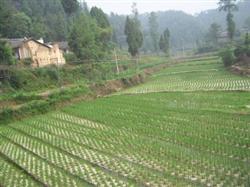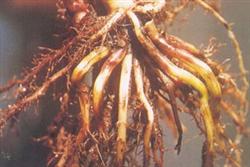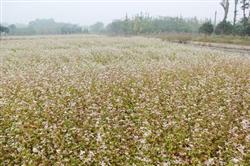Soil requirements of Sorghum

Sorghum is a crop that is tolerant to barren and saline-alkali. It has a wide range of adaptation to soil, and a certain yield can be obtained no matter what type of soil it is planted in. However, the yield is the highest in the sandy loam with fertile land, high content of organic matter and good soil structure. Clayey soil, such as extensive soil preparation and more bumps, often results in irregular seedling emergence, which has a large negative force on root growth after emergence and develops in a horizontal direction, which is not conducive to absorbing deep water and nutrients, and the yield is low. Therefore, in order to obtain high yield in planting sorghum in clayey soil, the key is good soil preparation and deep ploughing in order to promote root growth. Sandy soil is beneficial to sorghum seedling emergence, but because of its poor structure and low content of organic matter, it is easy to de-fertilize and senescence early in the later stage, so special attention should be paid to the supply of water and fertilizer in the later stage. Sorghum has strong adaptability to soil acidity and alkalinity, although neutral soil is very good, but both alkaline and acidic soils can be planted. The ability of acid and alkali tolerance varies with different varieties. Generally, the range of acid and alkali tolerance is between 3.1603163nmol / L (pH5.5~8.5), and the suitable acidity and alkalinity is 31.63316.3nmol / L (pH6.5~7.5). It can grow normally on saline-alkali soil with a salt content of 0.5% to 0.9%. It can not only obtain high yield, but also an important biological measure to improve saline-alkali soil. Topography also has an effect on the growth and development of sorghum. In a normal year, sorghum on flat land is better than that on sloping land. However, in rainy years, due to more water in flat land, microbial activity was inhibited and nutrients were lost, which hindered the normal physiological activities of sorghum, while the sloping land was less waterlogged and the yield was better than that in flat land.
- Prev

Sorghum black onion mold root rot
Symptoms can occur in both seedling stage and adult stage. In the seedling stage, the disease appeared like water-deficient wilting, the cortex and vascular bundles of the diseased seedlings showed brown water stains, and the fine roots softened and rotted. The infected leaves of adult plants drooped slightly, the old leaves yellowed, and began to dry up from the tip and edge of the leaves. The diseased root and the root crown become brown and rotten. The pathogen.
- Next

Cultivation techniques of autumn buckwheat after flood
Buckwheat is a good crop for filling leisure and disaster relief because of its short growth period, strong adaptability, moderate yield and high nutritional value, and can be planted from south to north in our province. The key technical links are as follows: first, sowing at the right time. Buckwheat likes warm and cool environment, is afraid of frost, and sows too early or too late, which will seriously affect the yield. Along the river in our province.
Related
- The first cup of black tea in spring, the flavor and history of tea gardens in Kenya, Africa
- The computer can not only choose potatoes, but also grow tea rice. AI will grow winter oolong tea champion.
- It is not only the inflated tea bitten by insects, but also engraved with the four seasons tea in Beipu.
- The Oriental Beauty Tea Festival in Zhuxian County takes the stage at the weekend to experience the plus-size feast of oil tea.
- & quot; Oriental Beauty Tea & Exploration of Emei in Hsinchu, the hometown of quot;
- The new variety of strawberry "Tainong 1" dessert is the first choice with mellow aroma. Crimson gorgeous
- History of Tea in Taiwan: from Wild Inner Mountain to Export Tea Garden
- Two types of Taiwan Oriental Beauty Black Tea won the British three-Star Award for Childhood Tea Xiang Zhang Jiaqi changed from pilot to champion tea maker.
- Banana species and varieties: the planting history of Taiwan Xianren banana and dwarf banana is long, is banana disease resistant?
- Coffee planting Technology: Qianjie Coffee from Seedling to harvesting

